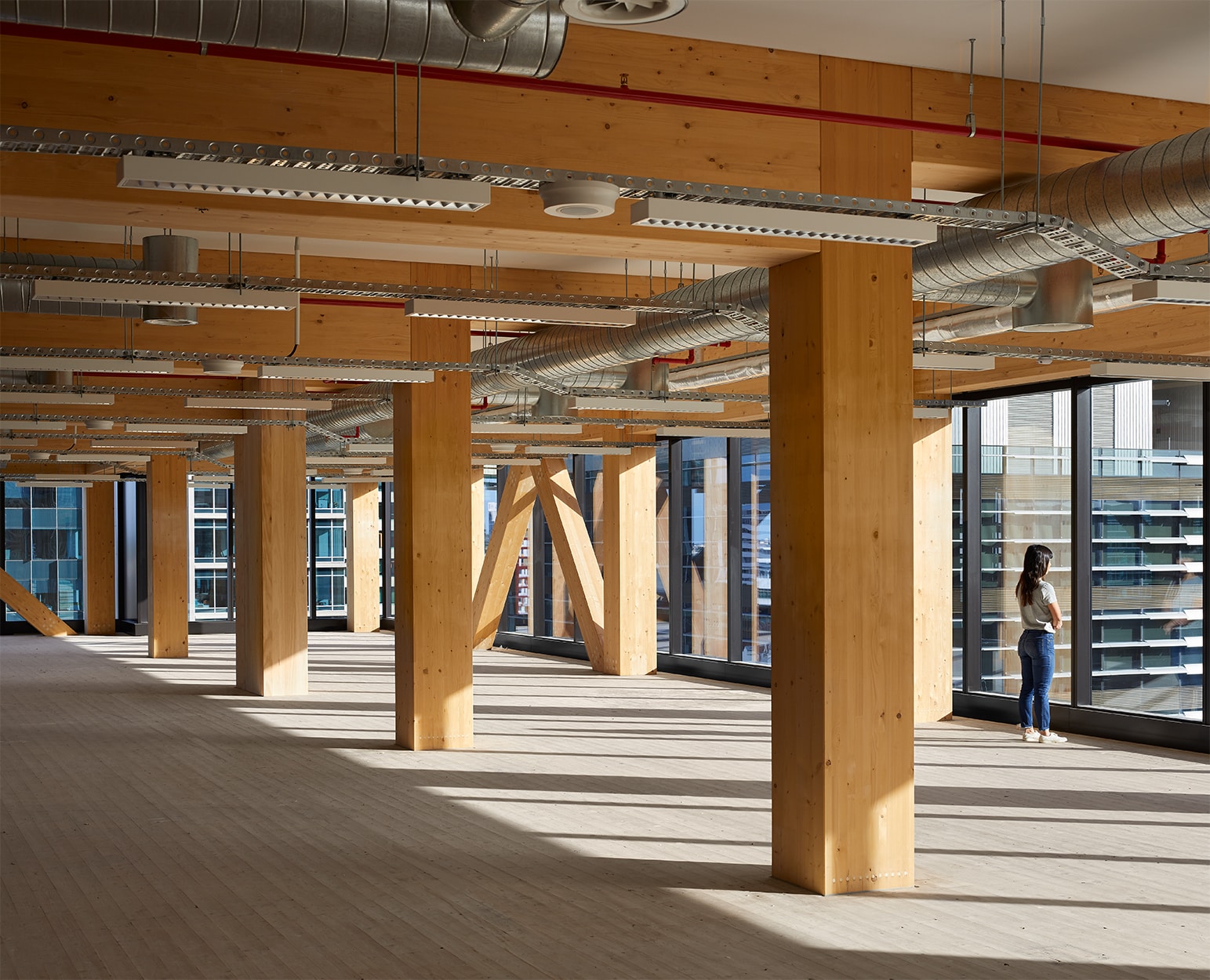https://www.weforum.org/agenda/2018/12/this-office-block-is-australia-s-tallest-wooden-building-7ef06575-f841-4fbb-a03b-d6d33a29cb19?fbclid=IwAR3_Y4u1QKPERUUhUfBO-MoMZ7ySkUXxOvZf3vSqCGsmj8Hyaoq1i2fhu3U
This office block is Australia’s tallest wooden building

Wood has a far lower carbon footprint than that of the traditional high-rise construction materials concrete and steel
Image: Bates Smart
03 Dec 2018
A new 10-storey office block is pushing the boundaries of commercial timber construction and making a case for eco-friendly construction.
Opened last week, 25 King in Brisbane is Australia’s tallest timber building at 45m high.

Image: Tom Roe
Made from 33 timber beams and 53 timber columns on each floor, 25 King is also claimed to be the world’s tallest timber office block.
As New Atlas reports, where steel and concrete might have otherwise been used, the companies behind 25 King used forms of highly engineered wooden materials instead.
In particular, the building makes use of cross-laminated timber, a kind of plywood made using advanced adhesives with a structural strength comparable to steel.

Image: Bates Smart
Timber trend
This strength has allowed designers and construction firms to start embracing timber as an environmentally friendly material for tower construction.
Wood has a far lower carbon footprint than that of the traditional high-rise construction materials concrete and steel, which are resource-intensive. It is also a renewable resource that locks in carbon dioxide.
Currently, the tallest timber-framed building in the world is an 18-storey block of student accommodation in Vancouver called Tallwood House.
However, from Chicago to London and Stockholm, cities around the world are planning much taller timber structures.
The most ambitious proposal for such a tower comes from Tokyo, where a Japanese timber company has revealed plans for the world's tallest wooden building. The 70-storey, 350-metre skyscraper would also be the country's highest.
Have you read?
Wood is good
A key advantage of timber as a construction material is that it is lightweight – about one-quarter the weight of an equivalent concrete building.
This means its foundations can be smaller, therefore requiring less concrete and taking less time to dig and pour.
The company that built 25 King in Brisbane took advantage of the wooden structure’s lightweight nature by prefabricating a large number of the building's components offsite.
This helped to greatly reduce on-site wastage and ensure a rapid construction time for a building of its size: just 15 months.
Embracing efficient techniques like offsite construction and new materials like cross-laminated timber is vital if the world is to keep up with growing housing demand, particularly in urban areas.
According to the World Economic Forum’s report Shaping the Future of Construction, the population of the world’s urban areas is increasing by 200,000 people per day.
The report says that building sufficient affordable housing to accommodate these numbers will require innovative techniques, materials and digital technologies being embraced by the construction sector.
This is already happening. In Zurich, for example, architects have developed a system where robots can assemble timber frames in a factory, prior to being installed onsite.
Share





沒有留言:
張貼留言